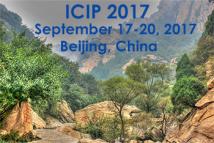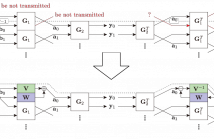
The International Conference on Image Processing (ICIP), sponsored by the IEEE Signal Processing Society, is the premier forum for the presentation of technological advances and research results in the fields of theoretical, experimental, and applied image and video processing. ICIP has been held annually since 1994, brings together leading engineers and scientists in image and video processing from around the world. Visit website.
- Read more about ACTION RECOGNITION USING SPATIO-TEMPORAL DIFFERENTIAL MOTION
- Log in to post comments
- Categories:
 8 Views
8 Views
- Read more about EFFICIENT CLOUD DETECTION IN REMOTE SENSING IMAGES USING EDGE-AWARE SEGMENTATION NETWORK AND EASY-TO-HARD TRAINING STRATEGY
- Log in to post comments
Detecting cloud regions in remote sensing image (RSI) is very challenging yet of great importance to meteorological forecasting and other RSI-related applications. Technically, this task is typically implemented as a pixel-level segmentation. However, traditional methods based on handcrafted or low-level cloud features often fail to achieve satisfactory performances from images with bright non-cloud and/or semitransparent cloud regions.
- Categories:
 23 Views
23 Views- Read more about AN EFFICIENT INTRA CODING ALGORITHM BASED ON STATISTICAL LEARNING FOR SCREEN CONTENT CODING
- Log in to post comments
Screen content has different characteristics compared with natural content captured by cameras. To achieve more efficient compression, some new coding tools have been developed in the High Efficiency Video Coding (HEVC) Screen Content Coding (SCC) Extension, which also increase the computational complexity of encoder. In this paper, complexity analysis are first conducted to explore the distribution of complexities.
- Categories:
 4 Views
4 Views- Read more about DETECTION OF MICROANEURYSM USING LOCAL RANK TRANSFORM IN COLOR FUNDUS IMAGES
- Log in to post comments
Accurate detection of microaneurysm (MA) plays a very important role in early diagnosis of diabetic retinopathy. This paper presents a novel method based on the variation of local intensity for microaneurysms detection in retinal images. In contribution, proposed method use local rank transform effectively
- Categories:
 7 Views
7 Views- Read more about AN EFFICIENT INTRA CODING ALGORITHM BASED ON STATISTICAL LEARNING FOR SCREEN CONTENT CODING
- Log in to post comments
Screen content has different characteristics compared with natural content captured by cameras. To achieve more efficient compression, some new coding tools have been developed in the High Efficiency Video Coding (HEVC) Screen Content Coding (SCC) Extension, which also increase the computational complexity of encoder. In this paper, complexity analysis are first conducted to explore the distribution of complexities.
- Categories:
 21 Views
21 Views- Read more about CASCADED TEMPORAL SPATIAL FEATURES FOR VIDEO ACTION RECOGNITION
- Log in to post comments
Extracting spatial-temporal descriptors is a challenging task for video-based human action recognition. We decouple the 3D volume of video frames directly into a cascaded temporal spatial domain via a new convolutional architecture. The motivation behind this design is to achieve deep nonlinear feature representations with reduced network parameters. First, a 1D temporal network with shared parameters is first constructed to map the video sequences along the time axis into feature maps in temporal domain.
- Categories:
 5 Views
5 Views- Read more about Improving the Discrimination Between Foreground and Background for Semantic Segmentation
- Log in to post comments
- Categories:
 5 Views
5 Views- Read more about MULTIGAP: MULTI-POOLED INCEPTION NETWORK WITH TEXT AUGMENTATION FOR AESTHETIC PREDICTION OF PHOTOGRAPHS
- Log in to post comments
With the advent of deep learning, convolutional neural networks have solved many imaging problems to a large extent. However, it remains to be seen if the image “bottleneck” can be unplugged by harnessing complementary sources of data. In this paper, we present a new approach to image aesthetic evaluation that learns both visual and textual features simultaneously. Our network extracts visual features by appending global average pooling blocks on multiple inception modules (MultiGAP), while textual features from associated user comments are learned from a recurrent neural network.
- Categories:
 35 Views
35 Views- Read more about Demonstration of Rapid Frequency Selective Reconstruction for Image Resolution Enhancement
- Log in to post comments
- Categories:
 59 Views
59 Views
- Read more about PSUEDO REVERSIBLE SYMMETRIC EXTENSION FOR LIFTING-BASED NONLINEAR-PHASE PARAUNITARY FILTER BANKS
- Log in to post comments
This study presents a pseudo reversible symmetric extension (P-RevSE) that solves the signal boundary problem of lifting-based nonlinear-phase paraunitary filter banks (L-NLPPUFBs), which have high compression rates thanks to their not having a constraint on the linear-phase property unlike the existing transforms used in image coding standards. The conventional L-NLPPUFBs with a periodic extension (PE) yield annoying artifacts at the signal boundaries.
- Categories:
 1 Views
1 Views